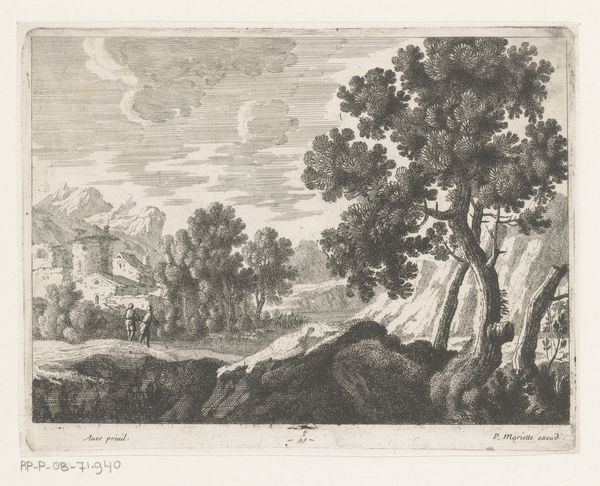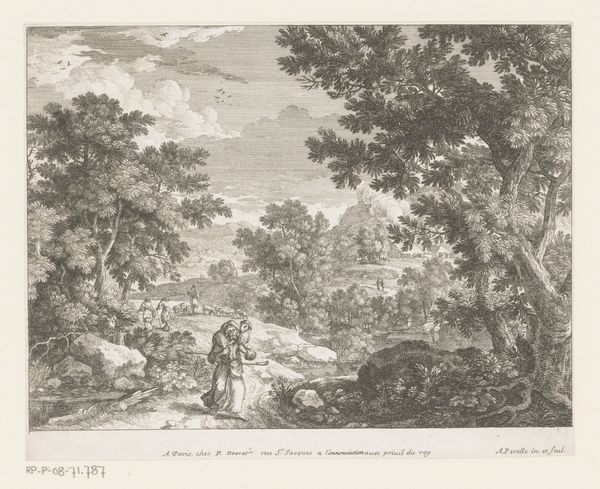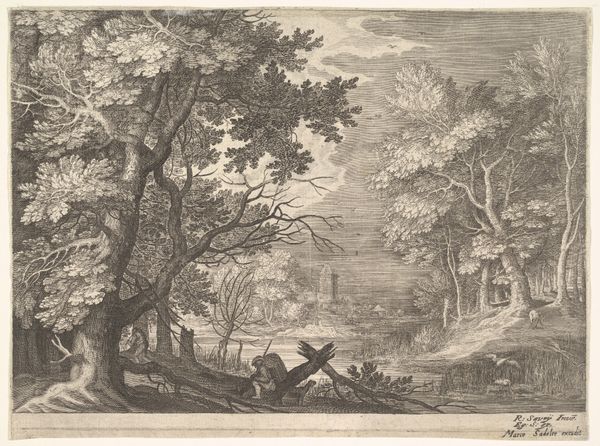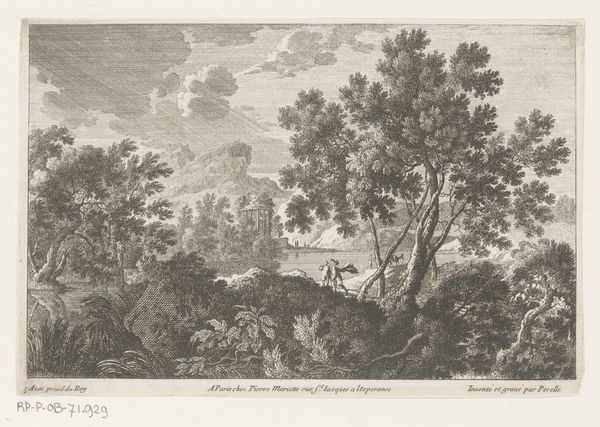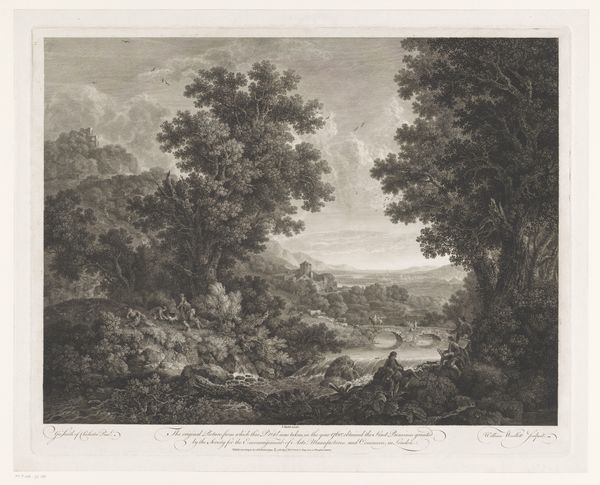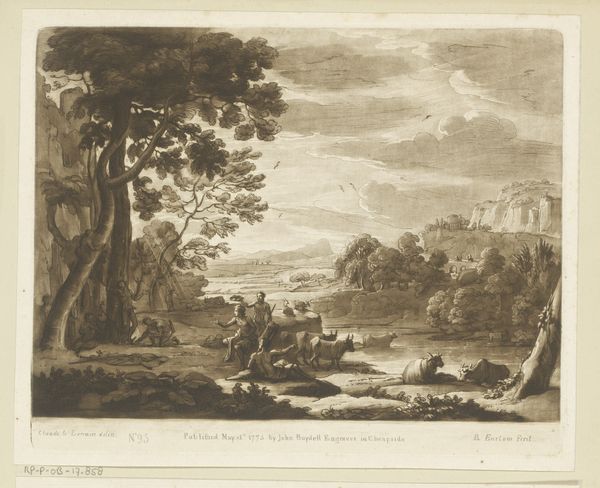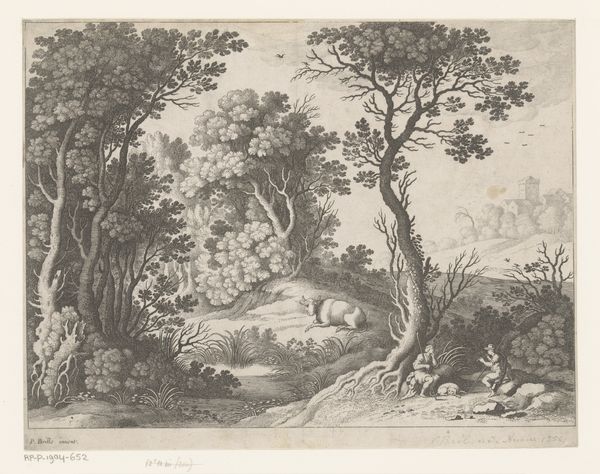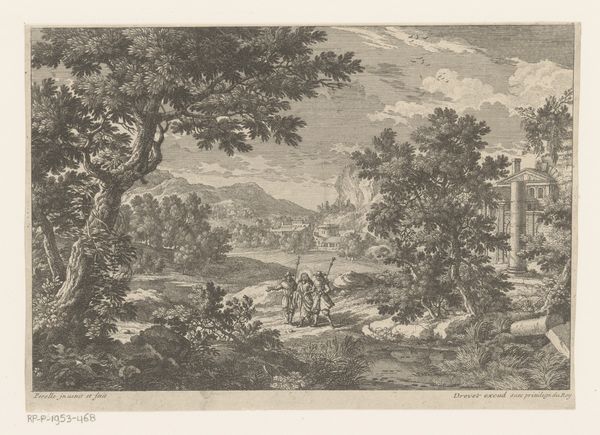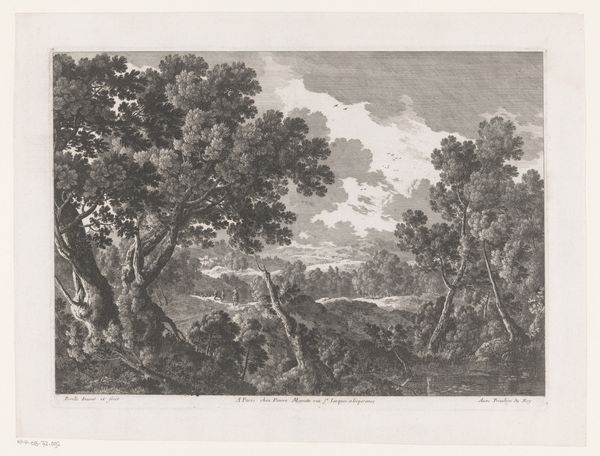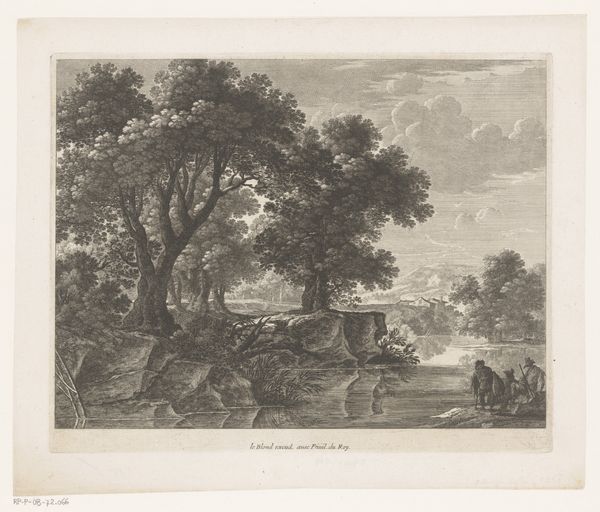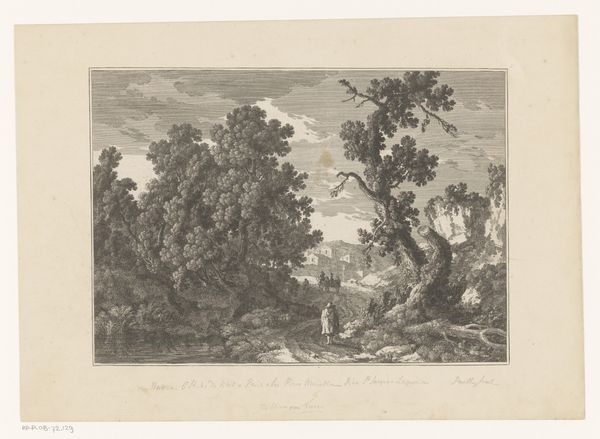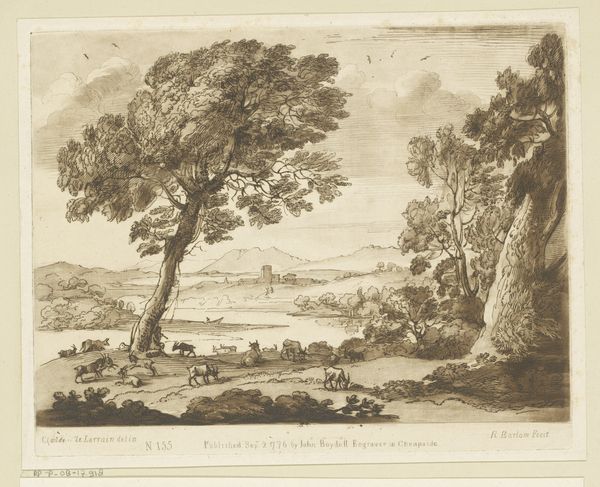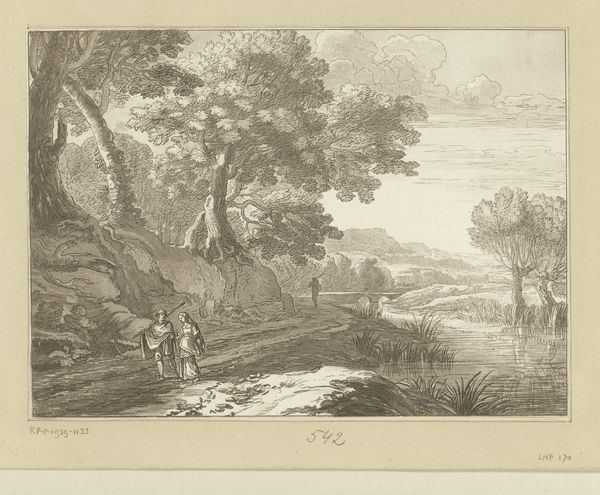
print, engraving
#
baroque
# print
#
landscape
#
engraving
Dimensions: height 139 mm, width 196 mm
Copyright: Rijks Museum: Open Domain
Curator: This engraving, titled "Landschap met bomen bij water" – or "Landscape with Trees by Water"– was created by Nicolas Perelle sometime between 1613 and 1695. It’s part of the Rijksmuseum’s collection. What strikes you first about it? Editor: It’s a surprisingly animated landscape for an engraving. You have these foreground trees practically clawing their way into the composition, a lively waterway, and even some tiny figures making their way along a path. Curator: Indeed. Perelle, though often categorized as a Baroque artist, blurs the line, particularly evident in his choice of engraving as a medium. Printmaking democratized image production and distribution, moving art outside elite circles. Consider the materiality itself—the paper, the ink, the very labor invested in the repetitive act of carving lines into a copper plate. These landscapes weren't simply aesthetic exercises; they were products of a burgeoning art market. Editor: I think your attention to process illuminates the social implications beautifully. This wasn’t about solitary genius. These images were widely distributed, shaping perceptions of landscape and potentially reinforcing class distinctions. After all, owning prints was a status symbol of sorts, right? This image is clearly intended for display and consumption in a domestic setting. And looking at the small figures in the distance reinforces that. I’m interested in who those figures are and how they fit into a broader social context of travel and land ownership in the era this print circulated. Curator: Precisely! By dissecting the means of its production, we start to recognize the agency embedded in each stroke of the burin. The Baroque's emphasis on drama finds an echo in the graphic weight, creating depth, perspective and volume from tiny marks made using repetitive and intensive human labor. Editor: Right. And focusing on its cultural moment lets us decode how such an image functioned in its world. It wasn't merely about representing nature, but actively shaping perceptions. Perelle uses established landscape conventions to project a vision of cultivated, ordered space. That vision is clearly bound up in specific socio-political forces. Curator: Well, I certainly look at it anew, considering your analysis of socio-political implications within the Baroque style, but also the technical considerations such as light and shadow from a material perspective. Editor: Agreed. Seeing it in this light helps reveal the values and anxieties embedded in seemingly simple landscapes.
Comments
No comments
Be the first to comment and join the conversation on the ultimate creative platform.
